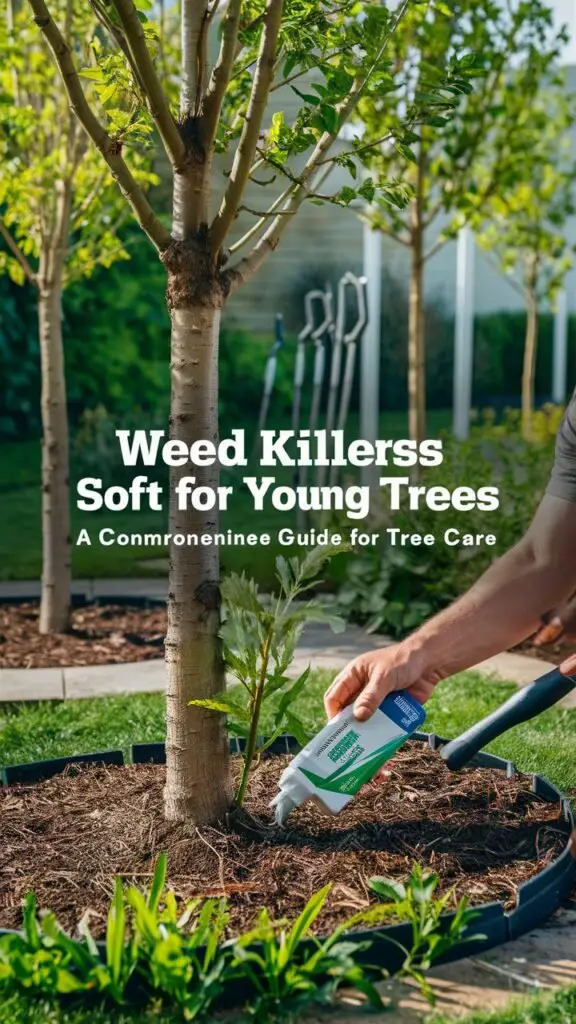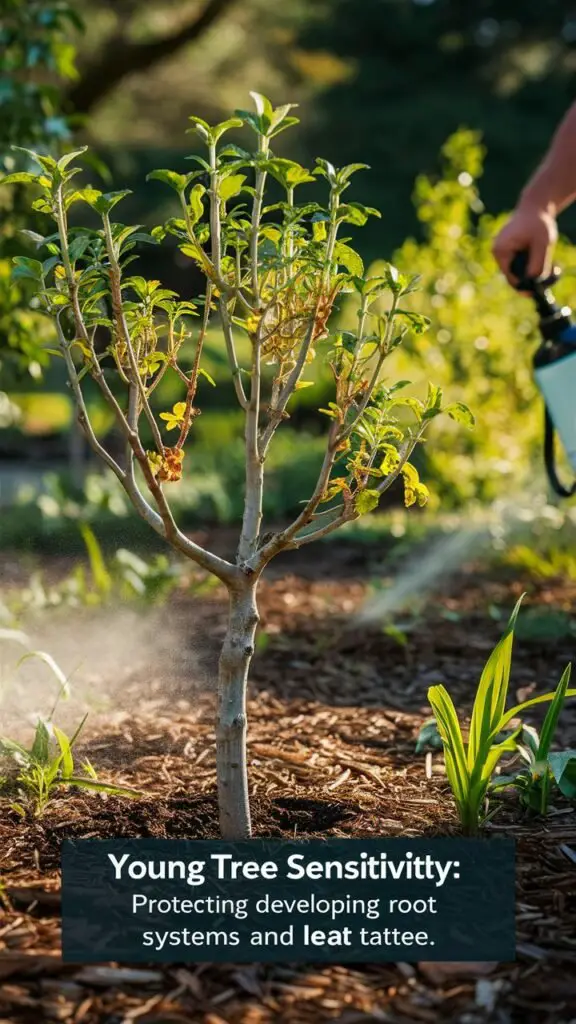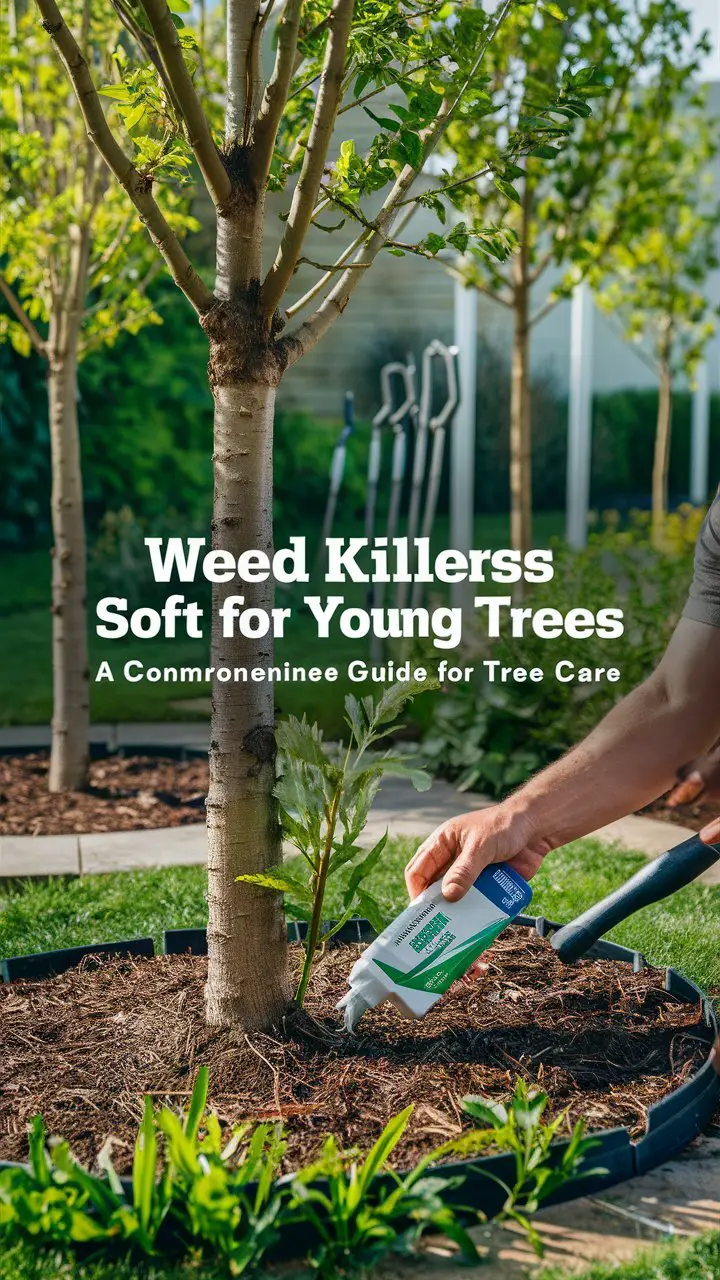Discover the safest weed killers for young trees in 2024. Expert guidance on herbicide selection, application techniques, and organic alternatives to protect your growing trees while effectively managing weeds.
When managing weeds around young trees, it’s crucial to use herbicides that won’t harm developing root systems. The safest weed killers for young trees are selective post-emergent herbicides with active ingredients like fluazifop-p-butyl and triclopyr, applied carefully around the tree’s drip line. Always maintain a safe distance of 6-12 inches from the tree trunk when applying any herbicide.

Hello, I’m Ashley Scott, a certified arborist with over 15 years of experience in tree care and landscape management. Today, I’ll share my expertise on selecting and using weed killers that are safe for young trees, helping you maintain healthy growth while controlling unwanted vegetation.
Understanding Young Tree Sensitivity

Young trees are particularly vulnerable to herbicide damage due to:
- Developing root systems
- Thin bark
- Active nutrient absorption
- Sensitive leaf tissue
According to the International Society of Arboriculture, proper weed control during the first three years is crucial for tree establishment.
Safe Chemical Weed Killer Options
Selective Herbicides
The following herbicides are generally safe when used properly:
- Ornamec (fluazifop-p-butyl)
- Targets grassy weeds
- Safe for most broadleaf trees
- Apply in spring or early summer
- Triclopyr-based products
- Effective against woody plants and broadleaf weeds
- Low soil activity
- Minimal risk to tree roots
Pre-Emergent Herbicides
Safe pre-emergent options include:
- Preen Tree and Shrub (trifluralin)
- Snapshot (isoxaben + trifluralin)
- Pendulum (pendimethalin)
Application Best Practices
To ensure safety:
- Create a buffer zone:
- Maintain 6-12 inches from trunk
- Apply outside the root collar area
- Avoid spraying on windy days
- Timing considerations:
- Apply during active weed growth
- Avoid extreme temperatures
- Consider seasonal tree growth patterns
Organic Alternatives
The Organic Materials Review Institute recommends these safer alternatives:
- Natural herbicides:
- Vinegar-based solutions
- Corn gluten meal
- Essential oil preparations
- Physical barriers:
- Mulch rings (Penn State Extension guidelines)
- Landscape fabric
- Cardboard barriers
Prevention Strategies
Implement these preventive measures:
- Proper mulching:
- 2-4 inches deep
- Keep away from trunk
- Refresh annually
- Ground cover options:
- Low-growing native plants
- Living mulch
- Beneficial companion plants
Warning Signs of Herbicide Damage
Monitor trees for:
- Leaf curling or yellowing
- Stunted growth
- Branch dieback
- Unusual leaf drop
Season-Specific Recommendations
Spring
- Apply pre-emergent herbicides
- Begin mulching programs
- Establish protection zones
Summer
- Use selective post-emergent herbicides
- Maintain mulch depth
- Monitor soil moisture
Fall
- Apply final herbicide treatments
- Prepare winter protection
- Evaluate annual success
Professional Application vs. DIY
Consider these factors:
- Professional benefits:
- Precise application
- Professional-grade products
- Liability protection
- DIY considerations:
- Cost savings
- Immediate response to issues
- Greater control over methods
Environmental Impact
According to the Environmental Protection Agency:
- Choose low-toxicity options
- Consider watershed protection
- Monitor beneficial insect populations
- Follow local regulations
Cost Analysis
Investment comparison:
- Chemical methods:
- Initial cost: $20-50
- Application equipment: $30-100
- Seasonal treatments: $100-200
- Organic methods:
- Natural products: $30-80
- Mulch: $5-15 per tree
- Physical barriers: $10-40
Long-term Tree Health Considerations
The USDA Forest Service recommends:
- Regular monitoring
- Integrated pest management
- Soil health maintenance
- Proper irrigation
Selecting the right weed killer for young trees requires careful consideration of both effectiveness and safety. By following proper application techniques and considering organic alternatives, you can successfully manage weeds while protecting your valuable trees.
For more gardening tips and plant care guides, visit usagardenhub.com





4 Comments on “Weed Killers Safe for Young Trees : A Comprehensive Guide for Tree Care”